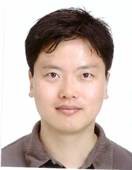Date: Wednesday, 26 June 2024
Time: 16:15 - 17:15 CEST
Session code 6CV.7
Processes for bio-based chemicals and materials 3
Synthesis of High Purity Cellulose from Kenaf Using Deep Eutectic Solvent and Oxalic Acid
Short Introductive summary
The purification of cellulose is one of basic step to use cellulose. Previous studies used pulping and environmental hazardous solvents such as sulfuric acid and hydrochloride. Those are energy-consuming and environmentally harmful. In this context, a green approach has been developed to extract high-purity cellulose from kenaf using deep eutectic solvents (DESs) and oxalic acid. The acid hydrolysis was performed to remove hemicellulose using oxalic acid. The delignification of kenaf was performed by using deep eutectic solvents (DES) instead of pulping process. Deep eutectic solvents (DES) are currently emerging as a new class of promising solvents that are generally liquid eutectic mixtures formed by hydrogen-bonding interaction of two or three components. It is simply prepared by mixing a hydrogen bond acceptor (HBA) with a hydrogen bond donor (HBD) or metal salt. In this study, chloride salts and ethylene glycol were used as a hydrogen bond acceptor. When citric acid was used as a hydrogen bond donor, the delignification efficiency significantly improved, finally 96% of cellulose purity was obtained after bleaching.
Presenter

Jin Hyung LEE
Korea Institute of Ceramic Engineering and Technology, Convergence center for Bioceramics
Presenter's biography
Jin Hyung Lee is a center leader of convergence center for bioceramics in Korea Institute of Ceramic Engineering and Technology. He received his M.Sc. and Ph.D. degree in Environmental Science and Engineering from GIST, Rep. Korea in the year 2003 and 2007, respectively.
Biographies and Short introductive summaries are supplied directly by presenters and are published here unedited
Co-authors:
J.Y. Park, Korea Institute of Ceramic Engineering and Technology, Cheongju, REPUBLIC OF KOREA
V.G. Firsty, Korea Institute of Ceramic Engineering and Technology, Cheongju, REPUBLIC OF KOREA
B.S. Jeon, Korea Institute of Ceramic Engineering and Technology, Cheongju, REPUBLIC OF KOREA
Session reference: 6CV.7.17
